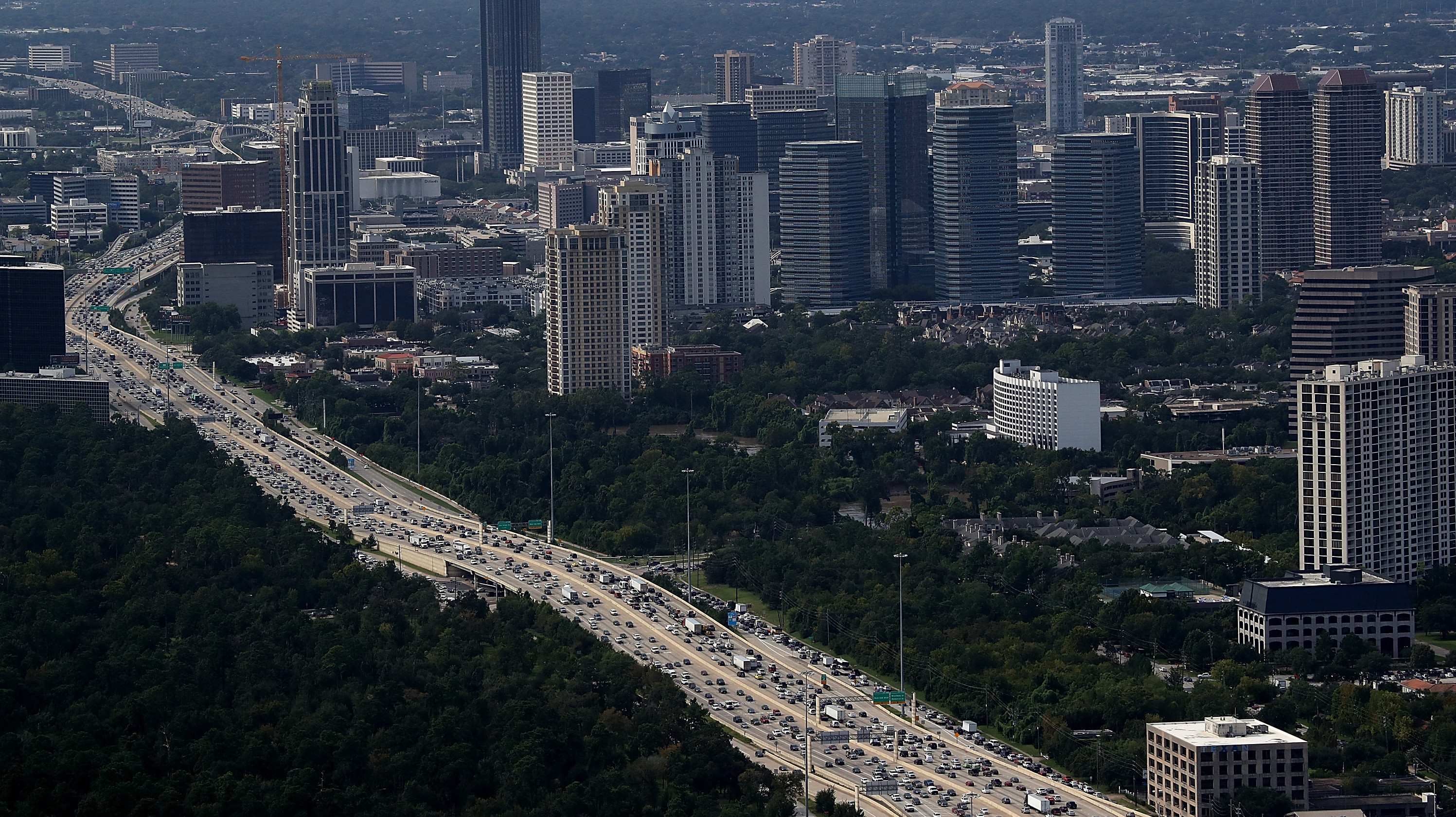This Freeway Interchange In Texas Is The Same Size As An Italian City Center, Pop: 30,000
Houston is a sprawling city with a well-earned reputation for being crisscrossed with freeways. It's so big, in fact, that you can fit the entire bustling downtown of an Italian city inside the area of just one of its many freeway interchanges.
Houston is America's ninth-largest city via square mile (a list where the first four spots are all taken up by Alaska, which seems like cheating to me. I see you Sitka, Alaska.) It's so big, that all it took was a small piece of it to illustrate land waste in a U.K. report by the Building Better, Building Beautiful Commission. Michael Hendrix of the Manhattan Institute highlighted the size comparison of just one of the city's freeway interchanges with the center of Siena, Italy, home to 30,000 people on, Twitter last month:
To be clear, the population of this Houston freeway interchange is zero. Is this a shocking comparison? Yep. Is it fair? Not even close, according to Texas Monthly, which points out that while living in a more compact space is obviously better for the environment and quality of life, we need to take history into account as well:
Siena's history dates back millennia. Houston, meanwhile, was founded in 1836. Siena's population has been stable for generations; the Houston area has ballooned in size by a factor of nearly twenty since 1940. Like many Sun Belt cities, Houston's population boom coincided with the rise of the automobile. Highways followed cars followed people. Houston is also a genuinely massive place. Going from one end of Beltway 8 to the other is roughly the same distance as going from the middle of Staten Island past the Bronx and all the way up to Yonkers....But it wasn't strictly an "everything is bigger in Texas" ethos that caused Houston to sprawl the way that it does. Rather, Cold War–era urban design philosophy in the U.S. prioritized sprawl because older cities that had urbanized pre–World War II—New York, Chicago, Philadelphia, and Detroit—were seen as being susceptible to nuclear strikes. Less-dense cities such as Los Angeles and Houston were less likely to be targeted for a nuclear attack. Sprawl was a deterrent against Soviet aggression.
I had never heard of the concept of suburban sprawl as a nuclear deterrent, but apparently it was an urban planning strategy in the '50s when Houston was going through one of its population booms. Of course, other factors such as redlining and white flight significantly contributed to the sprawling network of American freeways, especially in cities that boomed before WWII.
